The Builder warms to the idea of steel-framed buildings after the “peculiar” structures survive a tremor which flattens 80% of the city
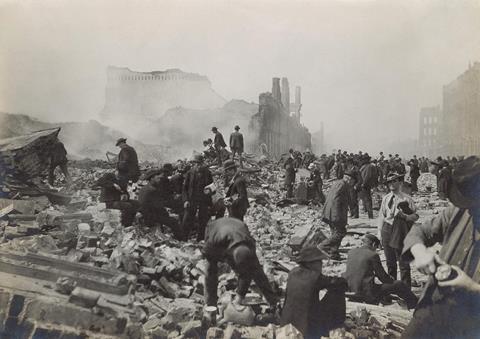
It’s a measure of the scale of the disaster which struck San Francisco on 18 April 1906 that the following week it was the subject of the leading editorial of a trade magazine on the other side of the world.

More than 80% of the city, America’s largest on the still sparsely populated West Coast, was destroyed and over 3,000 people were killed by the earthquake and ensuing fire in what remains the greatest loss of life from a natural disaster in California’s history.
It turned out to be a boost for steel-framed buildings, which were found to have fared much better than those built from wood and masonry. The Builder reluctantly conceded these “peculiarly American” structures might have some value, their apparent resistance to earthquakes being the “most valuable quality which we have yet heard of in connexion with them”.
Extract from leading editorial, 28 April 1906
San Francisco.
There is a strange irony of events in the fact that during the two years preceding the terrible disaster which has just devastated San Francisco, an elaborate scheme for the improvement and laying out of the city on new lines had been in process of development under the hands of an eminent American architect, and his Report and plans were completed and laid before the city authorities just six months ago.
The scheme contemplated a complete re-adjustment of the main lines of thoroughfare and vista, and a gradual rebuilding of the city on a great scale, such as could only be carried out little by little, dealing with one portion of the city at a time. The relentless forces of Nature have at all events cleared the way for the improver.

One is reminded of the Great Fire of London which was the opportunity for improved building, new lines of streets, and the erection of a great cathedral and a number of churches at the hands of one of the greatest architects whom this country has produced. Unhappily the opportunity for a new London, in the way of alignment of streets and the working out of a more dignified and centralised plan, was in great measure wasted through want of energy and of large ideas on the part of the authorities.
It does not seem likely that this mistake, at all events, will be made in San Francisco. The plan for an improved San Francisco is ready in advance, and we are assured that there is every intention of rising above misfortune, and of making this calamity, the opportunity for rebuilding the city according to the most approved ideas of plan and construction. If it be thought that it is foolhardy to set about rebuilding a city on a spot which has been thus visited by earthquake in its most appalling form, we may cite the instance of Lisbon, which was nearly destroyed by a similar calamity just a century and a half ago, but has remained unscathed since.
But there is a more rational ground of confidence to be recognised. We now learn that the steel-framed structures carried out on the modern and peculiarly American system which we have not been accustomed to view with much favour, have at all events shown that they are fairly proof against earthquakes - the best and most valuable quality which we have yet heard of in connexion with them. They are reported to be almost intact, even in the case of a building which was not quite completed, the owner of which expects to be letting offices in it in a few days. The discovery that such structures will withstand an earthquake that overthrew every other kind of building (unless the Mint, mentioned by a correspondent on another page, is an exception) is one of great importance, and teaches a lesson which is not likely to be overlooked.
There seems to have been an impression that the magnitude of the disaster was in great measure owing to the presence of a considerable proportion of wooden buildings - what are called in America “frame houses” - in the city, and that San Francisco has paid dearly for overlooking the object lesson furnished by the fire which, within the memory of many of our readers, made such fearful havoc of the old wooden-built city of Chicago. This would of course be only as regards the fires that followed the earthquake; for, apart from that danger, we should expect to find that wooden-framed houses would resist earthquake shock a great deal better than those built of ordinary brick and stone walling.
But that San Francisco has been careless and indifferent in regard to the danger of extensive wooden building in a great city appears to be quite a misapprehension. On the contrary, the matter has been for some time past the subject of special building regulations carried out in a thorough spirit of reform; and from the following information, which may be relied on, it will be seen that, though it was not possible to do everything at once, the San Francisco authorities have for some years back been proceeding vigorously and systematically towards the removal of this source of danger.
Letter, 28 April 1906
Correspondence.
THE SAN FRANCISCO FIRE.
SIR, The Press during the past week has been full of the earthquake and subsequent fire which has laid the greater part of San Francisco in ruins. In one of the accounts published by the London Press, it is stated that the only building which effectually withstood the fire was the “Mint.”*
It may interest your readers to know that the Mint was built of an extremely hard sandstone, of a light grey colour, with black specks. The stone was quarried on the east coast of Vancouver Island, North of Nanaimo - no suitable stone being nearer.
In 1889 I explored portions of the coast of British Columbia for sandstone for building purposes, and visited this disused quarry, finding the stone as above described; the appearance somewhat resembled grey granite, but on close examination it proved to be sandstone of the carboniferous series of Nanaimo. Local masons with whom I consulted also agreed that it was a sandstone, but said they had heard rumours that it had not weathered well, so when I visited San Francisco a few months afterwards I purposely went to the “Mint” and saw the clerk of the works in charge, who informed me the stone had weathered well and had given great satisfaction.
It should be understood that the “Mint” is a very substantial building (one built to last) and not of the usual American type.
JOHN J. ROBSON, M. Inst.C.E.
*This was evidently a mistake. - Ed.
** Was this a steel-framed building, or one depending on ordinary masonry? That is an important point. - Ed.
News item, 2 June 1906
San Francisco
The American technical journals last to hand contain full particulars and numerous photographic views of buildings in San Francisco taken after the earthquake and fire. These accounts confirm the somewhat scanty technical details that had previously reached this country, and justify the conclusions we have already expressed. They make still more clear the facts that for lofty buildings the steel frame is an admirable safeguard against shock, and that for buildings of moderate height good solid stone and brick masonry and substantial timber framework are little liable to damage by earthquake.
But the additional point is now demonstrated that buildings standing upon foundations carried down to solid rock, or upon piles driven into well compacted strata, suffer far less than those founded upon made ground and alluvial soil. The most recent evidence from San Francisco shows conclusively that the temporary shaking of rock well below the surface, while not causing serious effects upon the best types of construction, was sufficient to throw the less stable surface ground into wave-like undulations of most destructive character. A little reflection suggests that it is far less trying for any building to be shaken by tremors transmitted from a distance than to be violently tossed up and down on the surface of land reproducing in some measure the characteristics of a storm at sea.
News item, 2 June 1906
SAN FRANCISCO - The first all-steel building to be erected in the world is slowly rearing its unhandsome bulk from the ash-heaps of one of San Francisco’s main arteries of traffic. It is the “George Whittell Building”, and the architect, Mr. Frank Shea, had planned that it should be the most up-to-date “fire-resister” that iron and stone could produce. After the earthquake had passed and the fire had devoured the business section, Mr. Shea found that the gaunt begrimed girders and framework of the partly-built Whittell building had defied shock and flame.
The thought struck him, “Why not sheath it in metal like a battleship?” He suggested to the owner that such a structure would answer every requirement as to comfort and convenience; would be more commodious and at the same time both fire and earthquake proof. Mr. Whittell assented, and the framework is being rapidly walled in with steel plates riveted on steel-ribs. It is to be ready for completion within six months, and will cost, when finished, 150,000l. There are to be fifteen stories, a mezzanine floor, and a deep basement. The different floors are not to be partitioned until prospective tenants have selected the areas requisite to their needs.
American architects are watching the progress of the building with interest, as it is predicted that this type of structure will create a revolution in methods now being employed in the building world. Mr. Shea is confident that the projectors of hundreds of buildings on the Pacific coast will copy his idea.
More from the archives:
>> Nelson’s Column runs out of money, 1843-44
>> The clearance of London’s worst slum, 1843-46
>> The construction of the Palace of Westminster, 1847
>> Benjamin Disraeli’s proposal to hang architects, 1847
>> The Crystal Palace’s leaking roof, 1851
>> Cleaning up the Great Stink, 1858
>> Setbacks on the world’s first underground railway, 1860
>> The opening of Clifton Suspension Bridge, 1864
>> Replacing Old Smithfield Market, 1864-68
>> Alternative designs for Manchester Town Hall, 1868
>> The construction of the Forth Bridge, 1873-90
>> The demolition of Northumberland House, 1874
>> Dodging falling bricks at the Natural History Museum construction site, 1876
>> An alternative proposal for Tower Bridge, 1878
>> The Tay Bridge disaster, 1879
>> Building in Bombay, 1879 - 1892
>> Cologne Cathedral’s topping out ceremony, 1880
>> Britain’s dim view of the Eiffel Tower, 1886-89
>> First proposals for the Glasgow Subway, 1887
>> The construction of Westminster Cathedral, 1895 - 1902
>> Westminster’s unbuilt gothic skyscraper 1904
>> The First World War breaks out, 1914
>> The Great War drags on, 1915 - 1916
>> London’s first air raids, 1918





















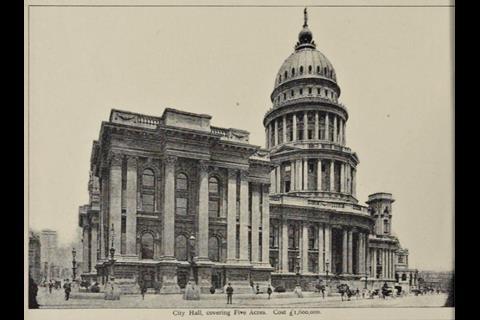
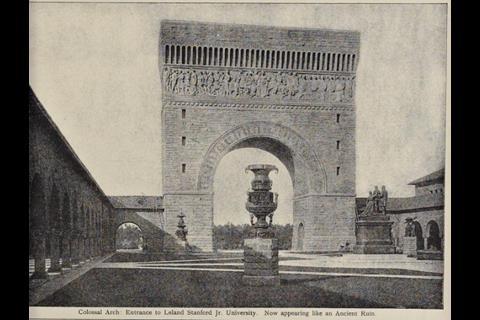
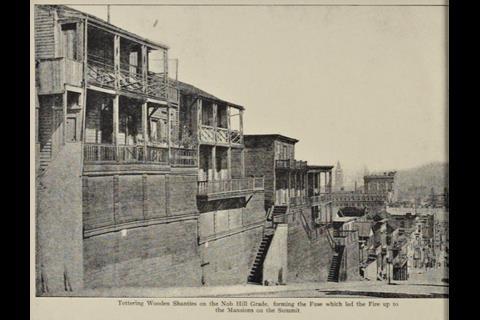
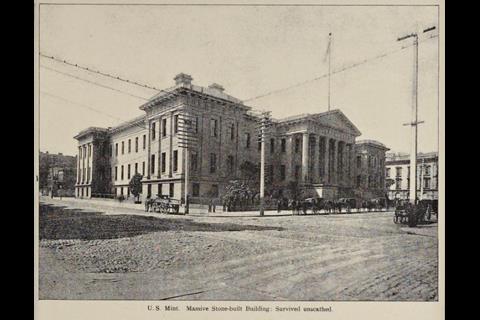
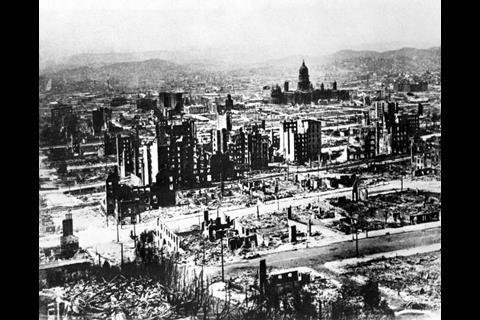
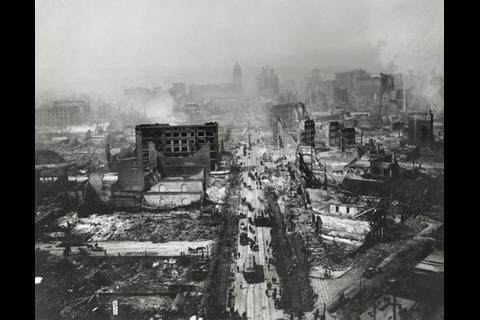







No comments yet